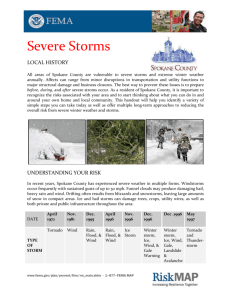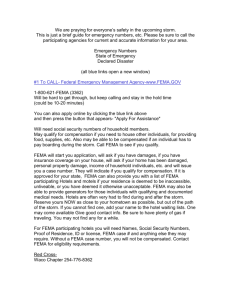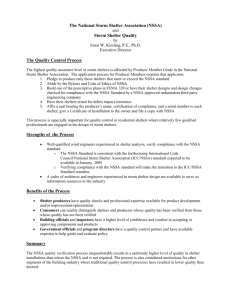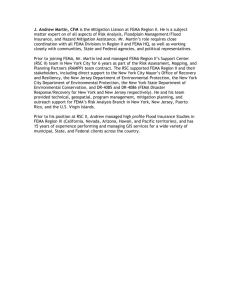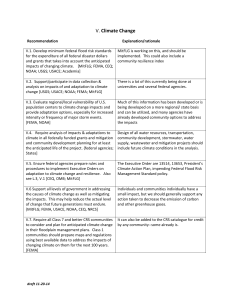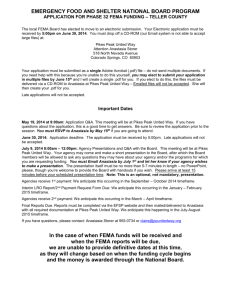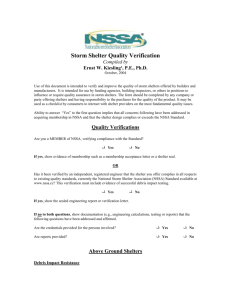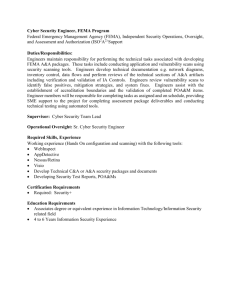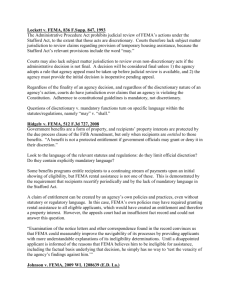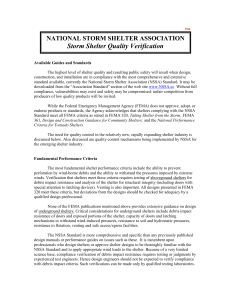saferoompolicy 2-28
advertisement
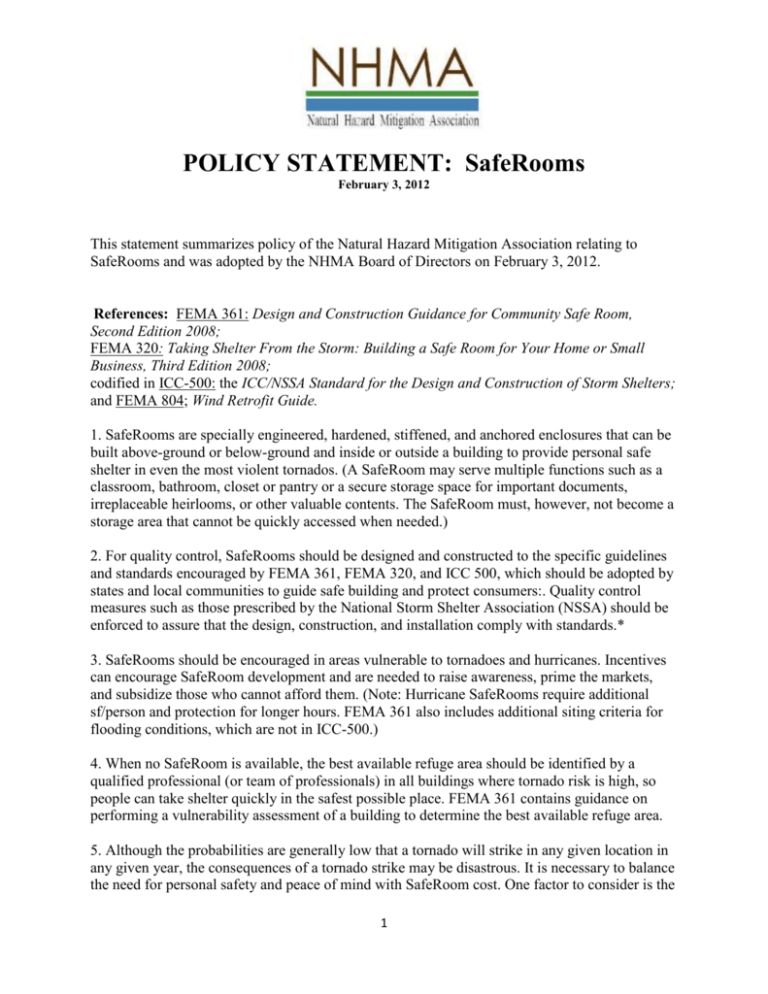
POLICY STATEMENT: SafeRooms February 3, 2012 This statement summarizes policy of the Natural Hazard Mitigation Association relating to SafeRooms and was adopted by the NHMA Board of Directors on February 3, 2012. References: FEMA 361: Design and Construction Guidance for Community Safe Room, Second Edition 2008; FEMA 320: Taking Shelter From the Storm: Building a Safe Room for Your Home or Small Business, Third Edition 2008; codified in ICC-500: the ICC/NSSA Standard for the Design and Construction of Storm Shelters; and FEMA 804; Wind Retrofit Guide. 1. SafeRooms are specially engineered, hardened, stiffened, and anchored enclosures that can be built above-ground or below-ground and inside or outside a building to provide personal safe shelter in even the most violent tornados. (A SafeRoom may serve multiple functions such as a classroom, bathroom, closet or pantry or a secure storage space for important documents, irreplaceable heirlooms, or other valuable contents. The SafeRoom must, however, not become a storage area that cannot be quickly accessed when needed.) 2. For quality control, SafeRooms should be designed and constructed to the specific guidelines and standards encouraged by FEMA 361, FEMA 320, and ICC 500, which should be adopted by states and local communities to guide safe building and protect consumers:. Quality control measures such as those prescribed by the National Storm Shelter Association (NSSA) should be enforced to assure that the design, construction, and installation comply with standards.* 3. SafeRooms should be encouraged in areas vulnerable to tornadoes and hurricanes. Incentives can encourage SafeRoom development and are needed to raise awareness, prime the markets, and subsidize those who cannot afford them. (Note: Hurricane SafeRooms require additional sf/person and protection for longer hours. FEMA 361 also includes additional siting criteria for flooding conditions, which are not in ICC-500.) 4. When no SafeRoom is available, the best available refuge area should be identified by a qualified professional (or team of professionals) in all buildings where tornado risk is high, so people can take shelter quickly in the safest possible place. FEMA 361 contains guidance on performing a vulnerability assessment of a building to determine the best available refuge area. 5. Although the probabilities are generally low that a tornado will strike in any given location in any given year, the consequences of a tornado strike may be disastrous. It is necessary to balance the need for personal safety and peace of mind with SafeRoom cost. One factor to consider is the 1 degree of occupants’ risk and choice: a low-income handicapped dweller in a public housing apartment probably has higher risk and fewer choices than a high-income owner of a high-valued single-family home. Stated differently: Vulnerable populations who may need additional assistance to access the SafeRoom need special attention through public assistance and/or regulations on building owners. Examples include dwellers of nursing homes, mobile homes, and day-care centers. Public buildings such as schools and hospitals should have designated rooms designed and built to resist extreme winds and provide occupant protection. 6. A six-point community program to encourage SafeRooms may include the following: a. Assess community risk and publicize. b. For quality control, adopt the ICC-500 Storm Shelter Standard and establish enforcement mechanisms.(Note: ICC 500 may be adopted by itself through the existing provision of the 2009 and 2012 International Building Code (IBC) and International Residential Code (IRC). Both the IBC and IRC require that “in addition to other applicable requirements in (the) code, storm shelters shall be constructed in accordance with the ICC/NSSA-500.”)* c. Establish partnerships (with home builders and Weather Service, for example) and conduct on-going public education campaigns about the availability and advisability of SafeRooms. d. Determine priorities for encouraging SafeRooms, which may include critical facilities, places where people congregate, places with vulnerable populations such as children and elderly, and places that house lower-income residents. e. Obtain funds for and administer SafeRoom incentives programs. f. Consider whether the community must or may want to require SafeRooms in certain high-risk and high-consequence cases, such as in critical facilities, mobile home parks, schools, nursing homes, or apartments. g. In addition to Safe Rooms, which provide for personal safety, NHMA also encourages communities to address wind-related property damage. Education, enhanced building codes, stricter enforcement of building codes, and incentives can all be used effectively to improve building performance and longevity. Incentives are most effective that produce long-term advantages to building owners and encourage owners’ support and involvement in the quality control process. Such incentives may include reduced insurance premiums and reduced taxes. *Note: Communities should encourage citizens to purchase SafeRooms bearing the seal of the National Storm Shelter Association. With the seal, NSSA member-qualified SafeRooms verify compliance with the FEMA 320/361 guidelines and the ICC-500/NSSA safe room standard. The NSSA process is the best way to verify compliance with all guidelines and standards in the SafeRoom industry 2
